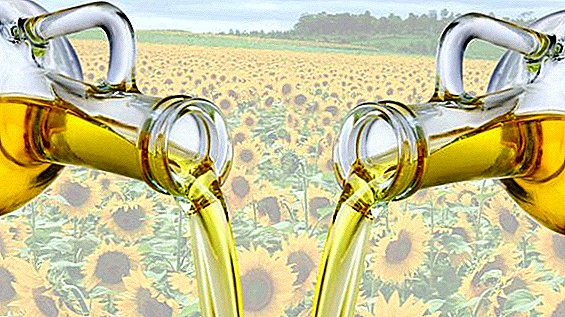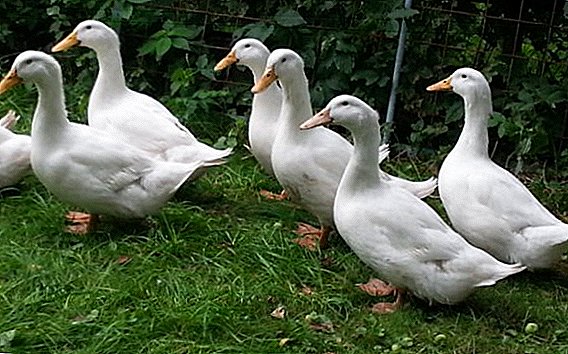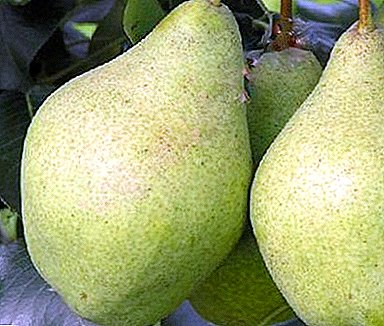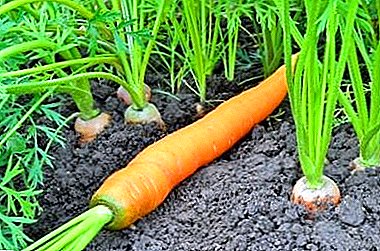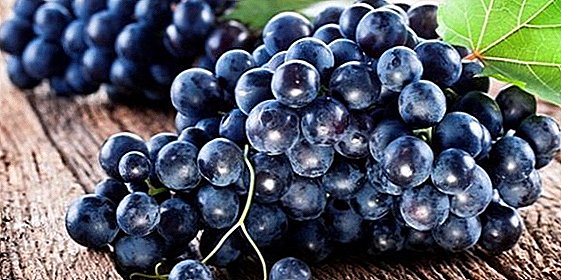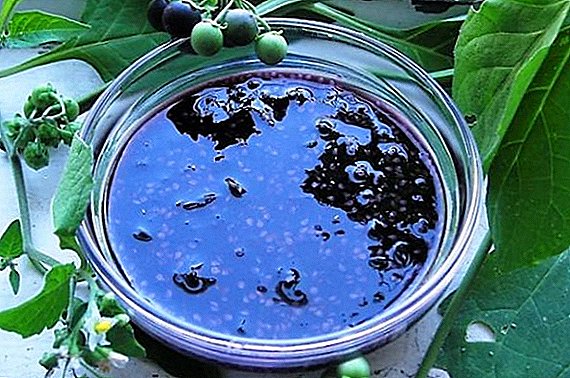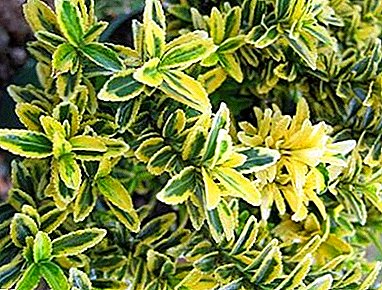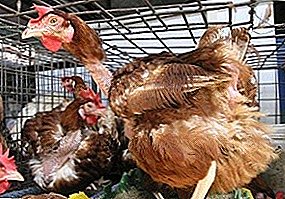
Diseases of poultry are difficult to determine, because birds cannot complain about poor health and pain.
Therefore, poultry farmers should carefully monitor the behavior of their wards, and in case of any deviations in their usual way of life, as well as external changes, immediately contact a veterinarian.
Among the wide list of diseases of poultry there are such ailments that are hard to miss.
One of these diseases is mallofagiosis.
What is mallophagus?
 Malofagiosis refers to the type of disease triggered by the insects of the order Mallophaga.
Malofagiosis refers to the type of disease triggered by the insects of the order Mallophaga.
Most often, the disease occurs due to insects such as puropoedy. The slightly elongated flattened body of the puhopeed has a yellow-brown color and is up to three millimeters long.
Parasites cling to bird feathers and move through its body using bristles and claws.
Puffy eaters feed on blood, feather particles, skin scales. These parasites are anatomically adapted for life on the body of any domestic and even wild birds.
They can often be found in chickens, roosters, turkeys, parrots, partridges, canaries, pigeons. The most severely affected birds suffer from the disease.
The spread of the disease and the degree of danger
 Malofagiosis affected poultry for many years.
Malofagiosis affected poultry for many years.
Since ancient times, breeders have desperately fought with parasites to avoid serious damage to the economy. The fact is that during the course of the disease, the vital activity of poultry is completely reduced, immunity decreases, the risk of new, even more serious diseases increases.
If we talk about chickens, then the egg production sharply decreases in the diseased individual, and the young grows extremely slowly and does not gain weight. In addition to all the listed effects, high mortality is added, which will cause even more damage to the poultry farmer.
Peroedi and puff-eaters multiply catastrophically quickly and in large numbers. This means that if an infected bird is not isolated, in the near future the disease will overtake all nearby individuals.
Parasites can survive without the body of the bird, hiding in bedding, cages and other common objects. That is why the infection of one bird should completely disinfect the place where it lived, including roosts, feeders and drinkers.
Pathogens
The causative agents of the disease are wingless insect-parasites with a mouth apparatus of a gnawing type. And they, in turn, appear because of non-observance of hygienic norms, contacts of domestic animals with free-living birds, dampness, lack of free space, crowded keeping of birds.
 The breed of Orpington chickens has become so widespread due to its meat characteristics.
The breed of Orpington chickens has become so widespread due to its meat characteristics.Learn more about floor insulation and how to do it yourself here.
Course and symptoms
The course of the disease is accompanied by many obvious external symptoms, which allows you to quickly identify the disease and immediately begin treatment.
The main symptoms of mallophagosis:

- The parasites living on the body of the poultry cause it great anxiety. Birds do not begin to behave as usual, become lethargic, or too excitable, nervous.
- Small holes appear on the feathers, and then they become disheveled, dull, and as if eaten.
- Insects causing mallofagiosis do not sit still and constantly crawl over the skin and feathers of birds. As a result of this, the bird develops a strong itch, it scratches itself with its paws, trying to peck it out of the feathers of parasites.
- During the course of the disease, the bird loses sleep and begins to refuse to eat. Disruption of appetite leads to severe exhaustion.
Diagnostics
With obvious clinical signs, additional diagnostics are carried out to identify parasites. There are several ways to do this:

- the bird is placed in a cage, a white sheet of paper is placed on the bottom, and in the morning they are carefully examined;
- the affected areas of the feathered are warmed with a lamp, as a result of which the parasites crawl out onto the surface of the feathers;
- the specimen is examined using a special magnifying glass;
- microscopic examination of the affected feathers for the presence of insects themselves or their eggs, larvae.
Treatment

- In the treatment of mallophagus, sick birds completely isolated in separate cells. The habitat of the diseased individual is carefully treated with insecticidal preparations.
Disinfection is subjected to cages, bedding, perches, perches, drinkers, feeders. If the poultry farmer has many individuals in his farm, then a selective inspection of the birds should be carried out, even if there are no signs of illness.
- Sick bird treated with special preparationsthat do not have a toxic effect. Before using insecticides, it is imperative to make sure that they are safe, since many drugs are forbidden to be used on an egg-laying individual and less than a month before slaughter.
Spraying with solutions and preparations should occur at a distance from the bird, avoiding contact with the composition on the beak, eyes. Strongly affected areas are treated as abundantly as possible, applying the preparation with a cotton swab.
- Sick feathered can bathe in the infusion of chamomile, powder with sulfur powder or pyrethrum through cheesecloth, rub dry wormwood or pharmaceutical chamomile powder into their feathers.
- For outdoor content it is recommended to cook ash-sand bath. Such a mixture is poured into a wide pan, and the bird will happily wallow in it.
After such a bath, the feathers will be protected by an additional layer, which prevents re-infection and destroys the parasites still living on the body.
- In the diet the birds are injected complete feed, calcium and salt preparations, mineral supplements.
The duration of treatment depends on the methods and drugs used. The annotation of anti-mallophagus remedies contains complete information on the number of treatments required and the general course of treatment.
Prevention and control measures
 In order to prevent the need to expand the place of keeping birds, to increase their area of walking.
In order to prevent the need to expand the place of keeping birds, to increase their area of walking.
In the premises and place of walking to establish a bath with sifted ash mixed with fine sand. A good prevention is to install a trough with wood ash or a mixture of seashells and chalk.
To prevent the occurrence of the disease, care must be taken to keep the bird area clean.Do not allow dampness, mold.
Prevent any contact of poultry with free-living individuals. Near the perches, bedding, and in the cells put a sprig of wormwood, dry birch leaves, bags of lavender, chamomile.
The onset of mallophoz disease is usually reflected in the behavior of the bird. Careful observation will allow to identify the disease in time, completely cure poultry and avoid serious consequences.



